Blog
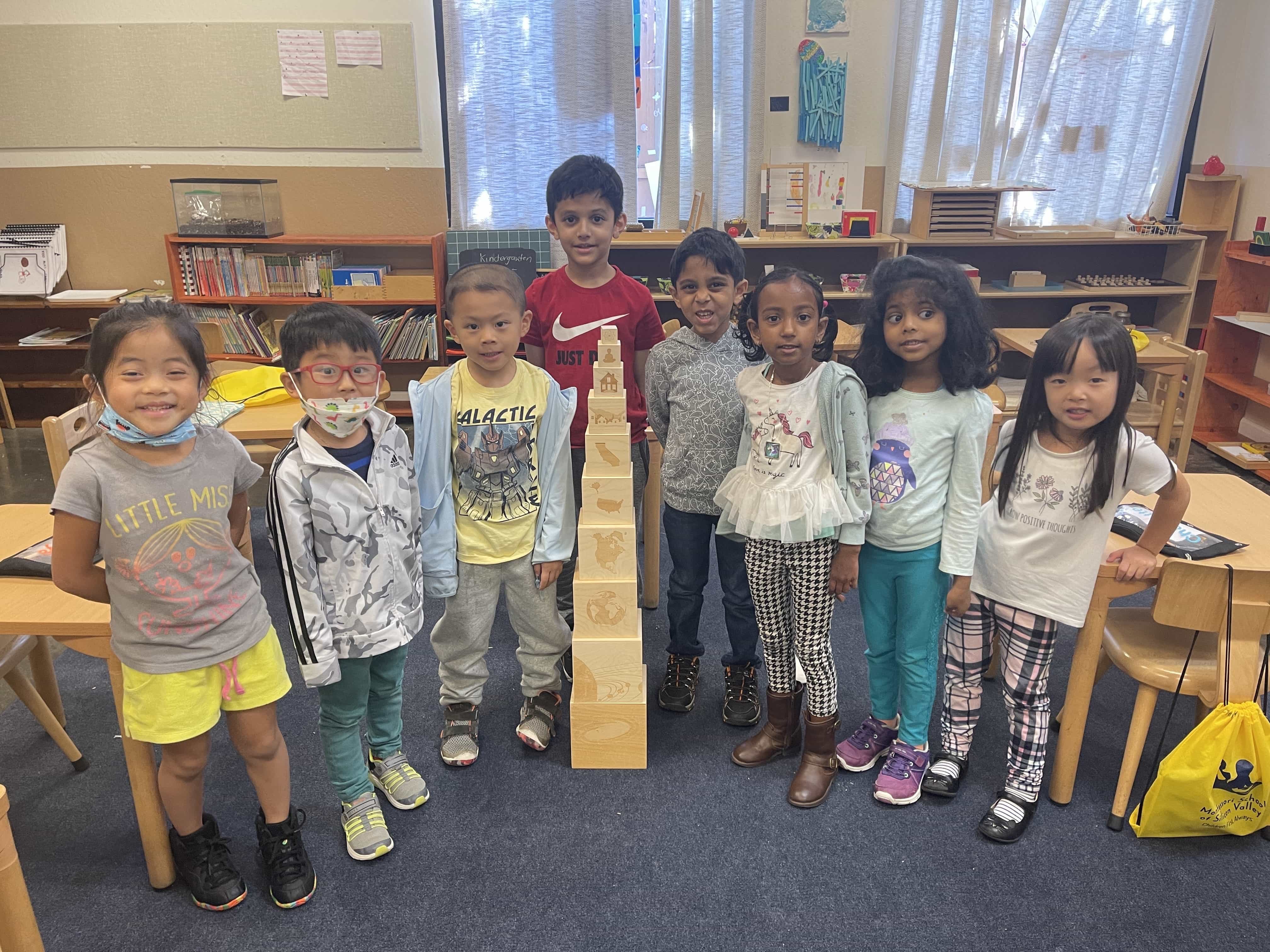
By Colleen Noll
As with all MSOSV programs, the Kindergarten – 3rd year offers a unique, open environment that emphasizes your child’s natural interests and allows your child to set his or her own developmental pace. The Montessori educational journey all began with Dr. Maria Montessori. Through scientific observations, she determined students learn best at their own pace and given the choice of activities.
The practical application of sensory-based and self-directed learning is the most important thread across all our programs including Kindergarten – 3rd year Montessori.
Montessori is a continuum of education that allows your child to build upon their experiences each year. Your child will stay in the Primary classroom for 3 years, including the traditional “kindergarten year”.
Reading and writing come to life from sounds and symbols. They are introduced to numbers and the decimal system. They learn about geometric figures and the political countries of our world. Kindergarten students leave the program with a strong set of academic skills but, far more importantly with the attitude that learning is fun, exciting, and boundless.
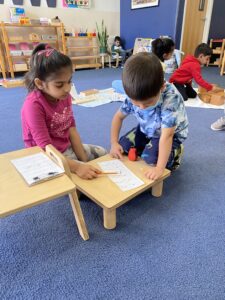 Each morning, students are guided by the teacher to select 3-4 work activities to complete/practice during the Montessori Morning Work Period. The lead guide ensures the students select at least one appropriate lesson in the math, language and geography areas to practice. As the students complete the work on their plan, the work is checked off. They then move on to the next activity. When the work plan for the day is complete, the students are free to choose from any area of the classroom for the remainder of the work period.
Each morning, students are guided by the teacher to select 3-4 work activities to complete/practice during the Montessori Morning Work Period. The lead guide ensures the students select at least one appropriate lesson in the math, language and geography areas to practice. As the students complete the work on their plan, the work is checked off. They then move on to the next activity. When the work plan for the day is complete, the students are free to choose from any area of the classroom for the remainder of the work period.
Once lunch is finished and the classroom is tidy, the Kindergarten students meet in their Primary classroom as well as the Kindergarten classroom for a work period from 12:30 to 3:00 PM.
12:30-1:15 PM Leading younger friends/Independent work
1:15-1:30 PM Group Meeting – Plan for the day
1:30-1:40 PM Reading from chapter book (Individual Reading time)
1:40-2:00 PM Group lesson (based on weekly curriculum schedule below)
2:00-2:30 PM Follow-up work to lesson/Individual work period
2:30-3:00 PM Work Period in Primary Classroom
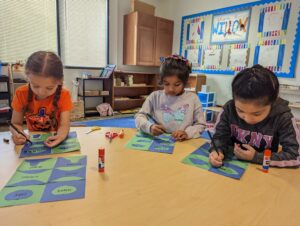
Each day the Kindergarten students will participate in group lessons that aid in the development of cooperative learning and an exploration of other classmates’ ideas. These lessons also provide the opportunity to bring together the concrete experiences they have had with the Montessori materials and apply them in an abstract way deepening their understanding of the subject matter.
Math
Lessons will be given on math elements such as fractions, money, and measurements. Students will continue to build on the math operations they have already learned in the primary class, while moving toward abstraction and memorization of math facts.
Science Biome Studies
An exciting element of the kindergarten curriculum is the introduction to biome studies. Biome studies provide a context for exploring life on our planet. The students will learn about the different elements that make up a biome – energy from the sun, water, soil, air, plants, and animals – with nomenclature and hands-on activities. They will then be introduced to different biomes found on our earth – temperate forest, tropical forest, wetlands, grasslands, mountains, deserts, and polar regions. We focus on the introduction of the biomes and the biome of North America. The students learn about the plants and animals that have adapted to live there. By working with introductory biome materials such as nomenclature cards, reader books, puzzles, mats, and labels. The hope is that student curiosity will be sparked, and more independent research/learning can be pursued.
Language
Students will continue to build their reading and writing skills through a variety of different activities. The students learn about the function of words and the grammar symbols. They will also learn to recognize sight words. Students, as they become ready, will begin learning to write cursive. Paragraphs become short stories and creativity is fostered.
Art & Science
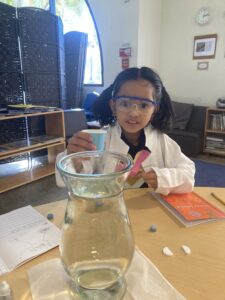 Students will explore open-ended art with varied materials, mediums, and techniques. They will also use this time to work on their Kindergarten scrapbook and sewing project. Color, light, gravity, chemistry, and astronomy are just a few of the concepts that will be explored.
Students will explore open-ended art with varied materials, mediums, and techniques. They will also use this time to work on their Kindergarten scrapbook and sewing project. Color, light, gravity, chemistry, and astronomy are just a few of the concepts that will be explored.
Health & Fitness
Students will learn about nutrition through the different food groups and what comprises a basic healthy diet. Attention will also be given on general wellness including the importance of sleep and exercise. The students will also participate in physical fitness activities that will range from calisthenics and practicing gross motor skills to sports skills and team games.
Homework in the Kindergarten Classroom
Every Kindergarten student will receive and decorate a book bag of their own. The bag goes home each Monday with a book (typically chosen from the classroom, but they may choose a book from home) and a journal. The child is expected to read the book, or have it read to them. The child then makes a journal entry for the book – they can write the title, copy a line from the book, write what they liked about the story, etc. They may also draw a picture to go with their journal entry. The book bags with books and journals should be brought back to school on Friday for the teacher to review.
“What can we do at home to help our child succeed in school?”
As with the work in our classrooms, our desire is that homework is child initiated to create productive work habits outside of the classroom. However, we also
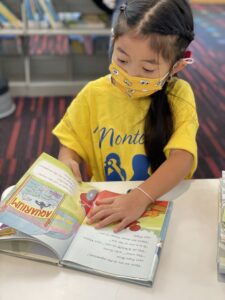
encourage families to approach homework as a collaborative practice among the family based on the interests of the child. Inside the classroom the students’ work expectations are rigorous and therefore homework should not derail the stamina they are building up each day. Students should want to learn from their work rather
than feel burdened by it. We like to see that homework is incorporated into the child’s day at home, rather than be a specific task, squeezed into everyone’s already busy schedule because it “has to get done.”
As a true extension of the work done in the classroom, homework should support the areas of reading, language, math, geography, and practical life skills. Please consider the following suggestions and ideas to incorporate into your student’s daily routine as their “homework.” Find the things that excite and motivate your student to learn.
Reading & Language
Math
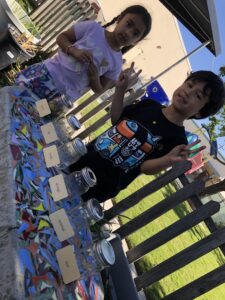
Practical Life